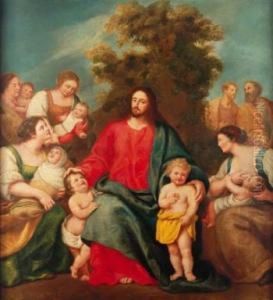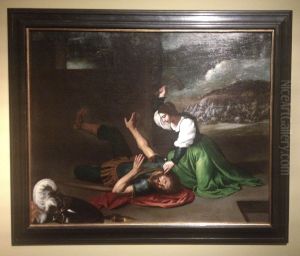Pedro Nunez Del Valle Paintings
Pedro Nuñez Del Valle was a Spanish painter of the Baroque period, noted for his contributions to the genre of religious painting in Spain. Although his exact birth year is not clearly documented, it is believed that he was born between 1597 and 1609 in Soria, a city in the Castile and León region of Spain. Nuñez Del Valle's death is recorded in 1649.
Nuñez Del Valle’s artistic life is somewhat obscure, with limited documentation of his training and early works. However, it is speculated that he may have been a pupil or follower of the renowned Spanish artist Juan van der Hamen, who was celebrated for his still lifes and flower pieces. Nuñez Del Valle's style showed a strong influence of Madrid's artistic circle of the early 17th century, which included artists who were followers of Caravaggio’s tenebrism and naturalism.
Working primarily in Madrid, Nuñez Del Valle is best known for his religious paintings, which often depicted scenes from the life of Christ, the Virgin Mary, and various saints. His works are characterized by a dramatic use of light and shadow, a technique that enhances the emotional intensity of the biblical narratives he depicted. His paintings were recognized for their devotional qualities and were sought after for worship in churches and private chapels.
One of Nuñez Del Valle’s significant contributions to art was his integration of still life elements into religious compositions, which was rather innovative at the time. This blending of genres was a testament to his skill and creativity, and it provided a rich visual experience that combined piety with an appreciation for the natural world.
Despite his talent and the quality of his work, Nuñez Del Valle did not achieve the same level of fame as some of his contemporaries. His works, however, can still be found in various collections and museums, and they continue to be studied by art historians for their representation of Spanish Baroque religious painting. Nuñez Del Valle’s contribution to the arts is a reminder of the myriad of talented artists of the Baroque era, many of whom remain lesser-known but were instrumental in shaping the artistic landscape of their time.

